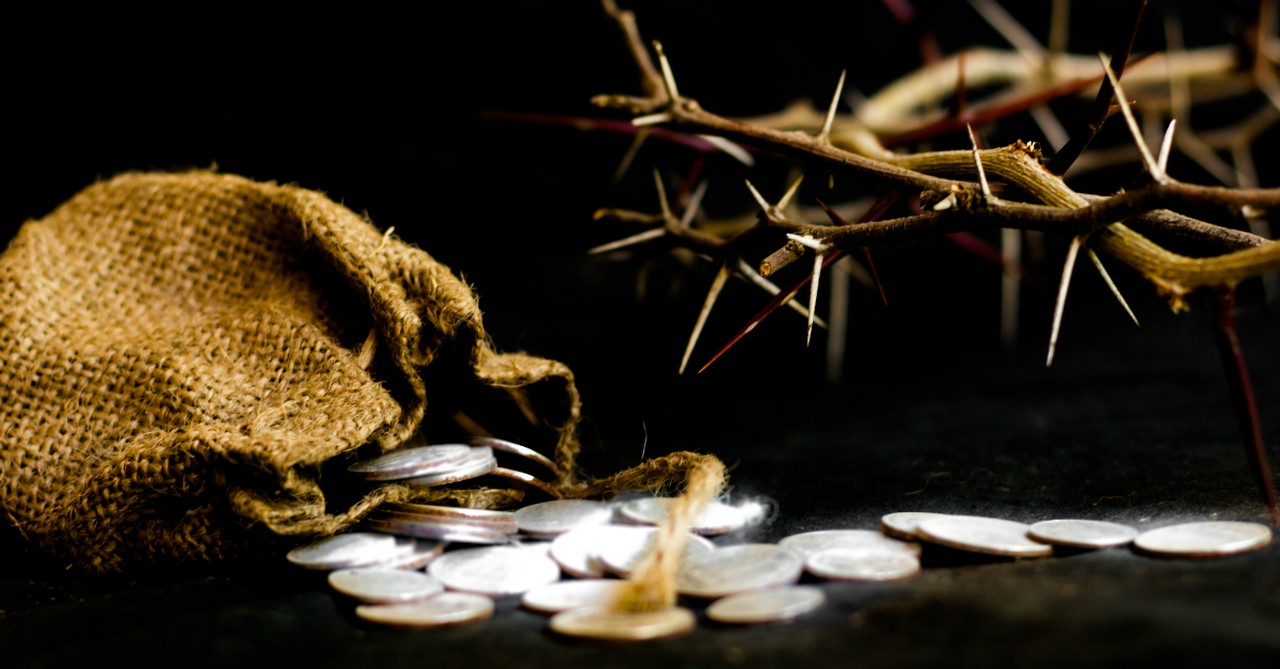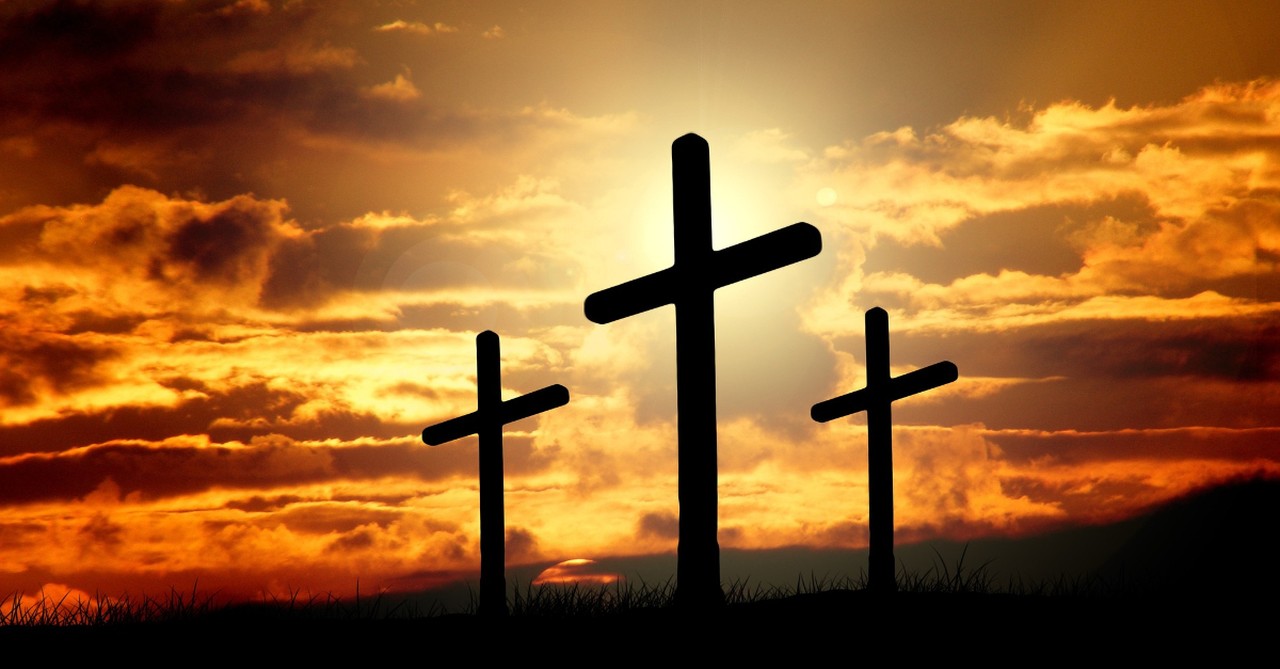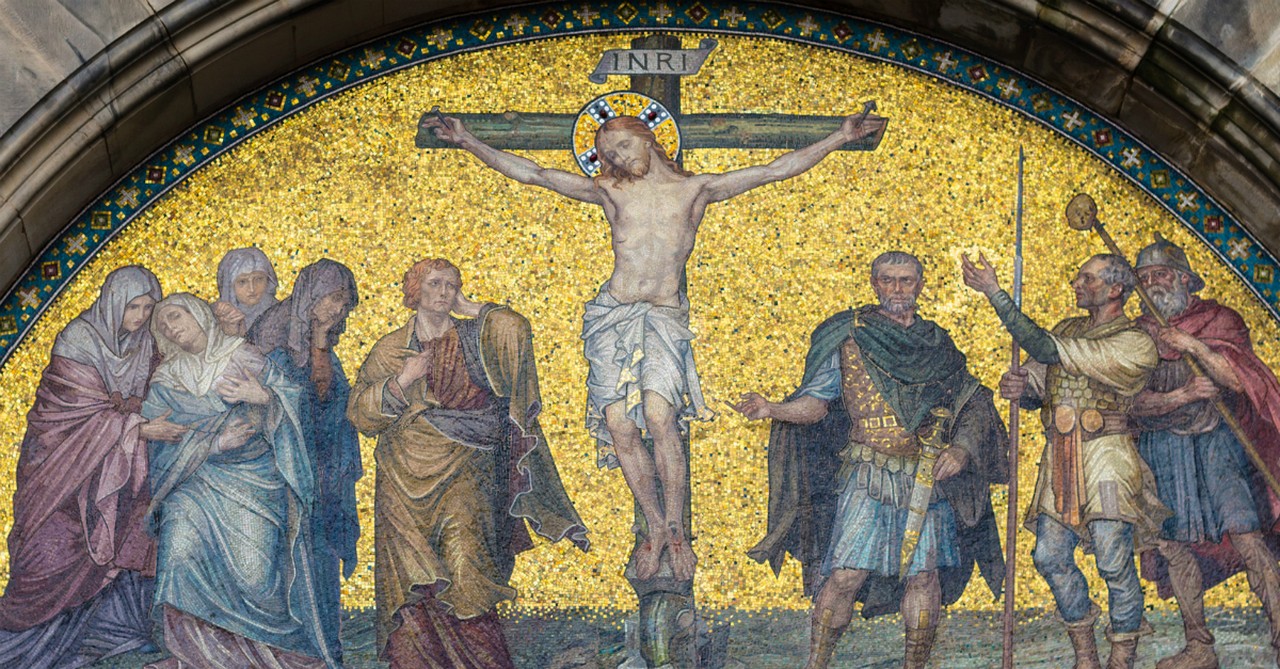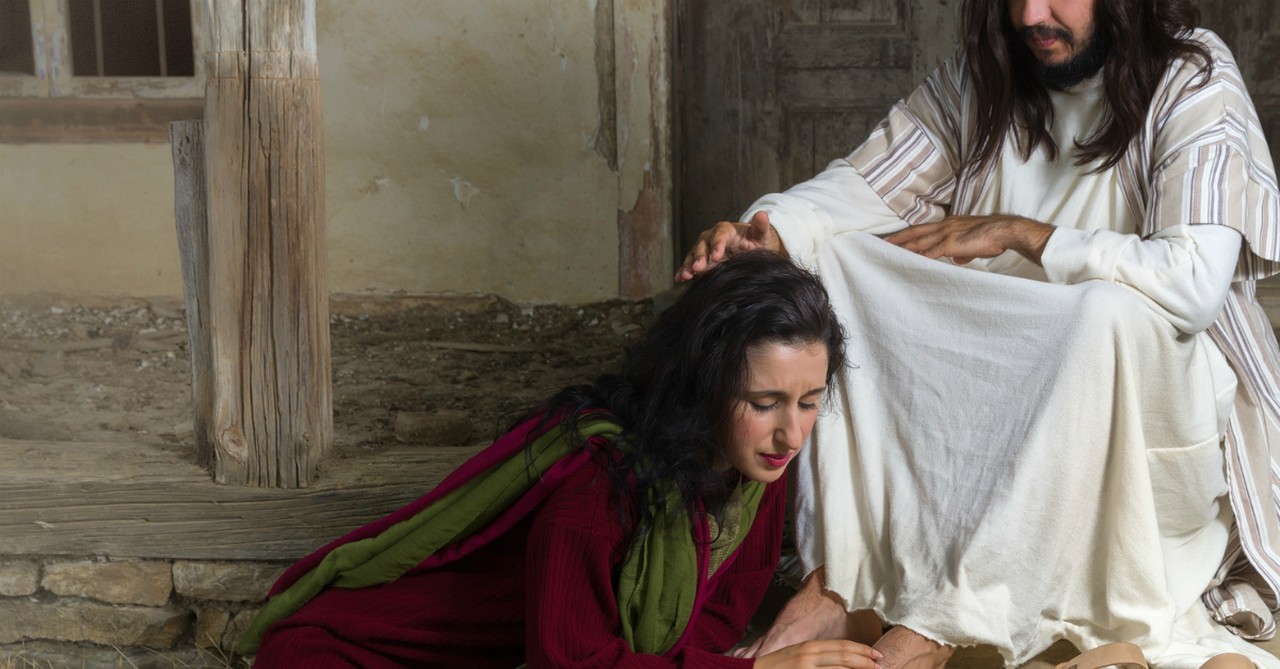10 Surprising Truths about the Easter Story

Every year during the Easter season believers celebrate the death and resurrection of Jesus Christ.
Holy Week begins with rejoicing as Jesus is ushered into Jerusalem in a triumphal entry, palm branches waving with chants of Hosanna.
The middle of the week turns somber as Jesus spends his final hours with his closest friends. In the span of 24 hours, he is arrested, beaten, and hung on a cross—a tragedy which is transformed by His rising again on the third day.
In the midst of services, praise, Sunday lunches, baskets, and candy lets look at 10 surprising facts about the Easter story:
Photo Credit: ©GettyImages/POMACHKA
1. The Word “Easter” Isn’t in the Bible

1. The Word “Easter” Isn’t in the Bible
SLIDE 1 OF 6
We continue to use the name when we refer to the holiday-related to Christ’s death on the cross and His resurrection. The word Easter is derived from “Eostra,” the neo-pagan goddess of spring and fertility. Her symbols are eggs and a rabbit.
The church of England and Germany chose the name “Easter” for the celebration of the resurrection while other parts of Europe use “Pascha” which comes from Passover, the Jewish celebration.
Because of its pagan roots, many believers choose to use “Resurrection Day” as their term for Easter.
2. Christ’s Coming Was Prophesied Over 300 Times in the Old Testament
Not only are there verses foretelling his birth, but also his death and resurrection. Isaiah 53 tells us the Messiah will be “despised and rejected by men” and “pierced because of our rebellion.” David prophesied of Christ’s betrayal in Psalm 41 and his resurrection in Psalm 16.
Despite the abundance of prophetic words about details of Christ’s life, the Jews still struggled to believe this man from Galilee was the one to fulfill them. They expected a warrior to free Israel from Roman rule instead of the son of a builder who came to free them from their bondage to sin.
3. Jesus Was Betrayed for the Price of a Slave
In Exodus 21, in the event of the death of a slave, the owner is to be paid 30 pieces of silver. In Matthew 27, Judas Iscariot accepted 30 pieces of silver to turn Jesus over to the Roman soldiers and religious establishment.
In Zechariah 11, the prophet Zechariah prophesied of the good shepherd being rejected by his own flock and requesting his wages to end his role as their shepherd. His wages were 30 of silver.
The life of God’s Son was valued at the price of a slave.
Photo Credit: ©GettyImages/gabrielabertolini
4. Gethsemane Means ‘Oil Press’

4. Gethsemane Means ‘Oil Press’
SLIDE 2 OF 6
Olives must be pressed to yield the healing oil they produce. Before his arrest, Jesus prayed in Gethsemane, a name which means “oil press.”
Gethsemane was at the base of the Mount of Olives and served as the area where the olives from the mount were pressed. It overlooks Jerusalem as people enter the city from the north.
Jerusalem was a sacred place for Jesus as the home of the temple and Jewish nation, so he spent much of his time on the mount overlooking the city he loved so deeply. In various parts of the Bible, the Mount of Olives and Gethsemane were places where a significant amount of praying, weeping, and pressing took place.
In 2 Samuel 15, David wept and prayed on the Mount of Olives as his wayward son fought him for the throne. In Zechariah 14 the prophet states the second coming of Christ will occur on the mount. In the first two gospels (Matthew 24 and Mark 13) Jesus tells his disciples of the second coming and destruction of Jerusalem while on the Mount of Olives.
Jesus entered Jerusalem on a donkey from the mount the Sunday before Passover. He wept for the city and the people in it (Luke 19:41). During his final week, Jesus spent each day teaching in Jerusalem, then retreated to the mount each night.
Christ prayed at Gethsemane at the Mount of Olives before he was arrested.
Christ came to this place for his ultimate pressing to be the healer for the sins of the world.
In Acts 1, Jesus ascended to Heaven from the Mount of Olives as his disciples entered Jerusalem from there, after witnessing the event.
Photo Credit: ©GettyImages/dulezidar
5. Barabbas Means 'Son of Abba'

5. Barabbas Means 'Son of Abba'
SLIDE 3 OF 6
Or, otherwise known as Son of the Father.
As was the custom during each Passover, the government would release a criminal at the request of the people. In his efforts to appease the people, Pontius Pilate (the Roman governor) offered the rebel, thief, and murderer Barabbas as an alternative to Jesus, who he had repeatedly deemed innocent.
The life of “the son of Abba” was exchanged for the Son of the Father God, Jesus.
6. The Most Innocent Received the Most Punishment
Jesus, the most innocent man, received the most severe punishment.
Crucifixion was used by the Roman government to demonstrate their authority, sending the message that they should not be challenged. Under the Jewish leadership, no one could not be put to death.
For Jesus to be murdered, which was the goal of the Jewish leadership, he had to be found guilty by the Roman government (John 18:31). Crucifixion was reserved for the most violent criminals and those who rebelled against the government.
Barabbas the murderer, fit this description, not Jesus, and Pilate knew this. Pilate hoped the punishment of flogging would be enough to satisfy the mob. No guilt was found, but because the Jews were adamant and Pilate wanted to keep the peace, he allowed Jesus to be dealt with however the Jews wanted.
A sinless man died a sinners’ death.
Photo Credit: ©GettyImages
7. Golgotha Wasn’t on a Hill Far Away

7. Golgotha Wasn’t on a Hill Far Away
SLIDE 4 OF 6
The first stanza of an old hymn “The Old Rugged Cross” says, “On a hill far away, stood an old rugged cross.” One purpose of crucifixion was humiliation; therefore, the site was not so far away from the city and on a road where plenty of people could stand and watch.
Because of the time of year, Passover, there were thousands of people in Jerusalem at the time, witnessing the crucifixion.
8. The Number 3 is throughout the Gospels for Good Reason
The number three is prevalent throughout the gospels related to the crucifixion and resurrection. Three signifies completion and permanence in the Jewish faith. God is in three parts: Father, Son, and Holy Spirit. The three fathers of the Jewish faith are Abraham, Isaac, and Jacob. There are three Jewish pilgrimage celebrations.
During the final week of Christ’s life, He asks three friends to pray with him: Peter, John, and James. Peter denies Christ three times, then is reinstated three times by Christ when he is asked, “Peter do you love me?”
Three hours of darkness come over the land while Jesus is on the cross. There are three crosses on Golgotha. Jesus is in the tomb three days before his resurrection. Jesus completed his ultimate mission on earth by enduring the torture of crucifixion and fulfilling the resurrection, becoming the permanent sacrifice for sin.
Photo Credit: ©GettyImages/VvoeVale
9. Women Are Significant to Easter

9. Women Are Significant to Easter
SLIDE 5 OF 6
Women played a significant role in the Easter story of Jesus that we all celebrate. During that time, women were not to be seen in public, especially conversing with a man. The woman’s role was to stay in the home while the men dealt with business matters outside of the home. They were illiterate and did not receive teaching of the scriptures.
Jesus, not afraid to set new cultural standards, frequently conversed with women. While all the disciples scattered when Jesus was arrested, women were at the foot of the cross, along with his cousin (and disciple) John.
It was three days later that the women arose and arrived first at the tomb only to find it empty. The disciples didn’t believe the women when they delivered the news that Jesus had risen, just as He said He would.
When Mary Magdalene returned to the tomb, she was the first to see the risen Savior. Because of Jesus’ high regard for women, many women were prominent figures in the early churches in the book of Acts.
Photo Credit: ©GettyImages/Studio-Annika
10. The Whole Story of Easter Doesn’t End with the Resurrection

10. The Whole Story of Easter Doesn’t End with the Resurrection
SLIDE 6 OF 6
The Easter story does not end with the resurrection of Jesus Christ.
While Easter is the most celebrated Christian holiday other than Christmas, 50 days after Jesus’ resurrection believers were given the ultimate gift: the Holy Spirit. The resurrection proves that Jesus conquered death and the sin of the world. Pentecost supplied the ongoing power.
Over 3,000 believers were filled with the Holy Spirit on that day which sparked the flame of the gospel, the good news of Jesus Christ. The believers, filled with the Spirit, shared the Salvation of Christ throughout the region, and throughout the Roman Empire, to all Jews and non-Jews, men and women.
The Easter story can easily be skimmed over year after year as we get lost in the celebration of the season. Steeped in meaning and significance the story has the ability to impact us all, if we will allow it. Our lives, once crucified with Christ, can also be resurrected with Him.
Photo Credit: ©GettyImages/Baiterek Media

Originally published March 17, 2020.









